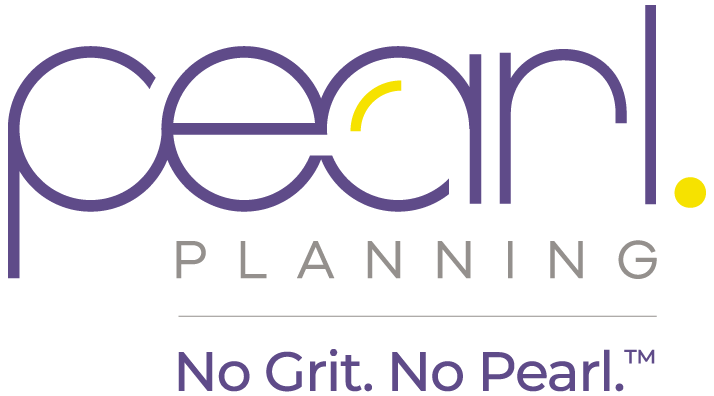Roth assets are treasured for their tax-exempt status, but many Americans with high incomes are phased out from Roth IRA contributions due to income limits. Fortunately, an alternative strategy known as the Backdoor Roth IRA can expand the accessibility of Roth IRA contributions if you have passed Roth contribution income thresholds.
What is a Backdoor Roth?
A backdoor Roth contribution takes an after-tax IRA contribution where you have not received tax deductions and converts these funds to Roth IRA. The advantage of this strategy is that while your IRA contribution can be after-tax in an IRA, the growth would include a tax price tag at ordinary income when withdrawn. With a backdoor Roth strategy, the converted funds would be entirely tax-exempt in addition to the original contribution.
Who Should Consider a Backdoor Roth IRA?
- Are you looking for additional ways to save in tax-advantaged ways? If you are a high earner and have additional cash on hand after you have maxed out your employer retirement plan options, a backdoor Roth strategy may be right for you. Evaluate your tax buckets and determine if you would like to boost your tax-exempt bucket (aka the Roth).
- First, are you eligible for a regular Roth IRA contribution? You must have earned income in the year you are contributing with any strategy. Then, determine whether your income allows you to make a Roth IRA contribution via normal means. The IRS modifies their income limits each year. Per the IRS, in 2021 your ability to contribute phases out at modified adjusted income of $198,000 to $208,000 if you file married filing jointly and $125,000 to $140,000 if you are single, head of household, or married filing separately. If you are eligible for a Roth contribution, stick with the Roth contribution. There is no need for a backdoor Roth.
- Next, would your IRA contribution be deductible? The backdoor Roth contribution does not work if you are making a deductible IRA contribution. For example, if you and your spouse do not have employer retirement plans, your IRA contribution will receive a tax-deduction and will not be after-tax.
- Do you have an IRA with before tax money? If you have a traditional IRA, a SEP IRA, or a rollover IRA from a previous employer plan, you will likely need to reconsider the backdoor Roth IRA strategy. When converting to a Roth, if you have other deductible IRA assets, the conversion’s tax bill would be pro-rated. For example, if you had $5,000 after-tax value in an IRA and $5,000 that is before-tax funds, a conversion of $10,000 would be 50% taxable and 50% tax-free. Keep in mind that the IRS looks across ALL of your IRA accounts, not just the account where you plan to convert.
- What are some options if I still want to do a backdoor Roth, but have before-tax IRA assets? Evaluate your employer plans and determine if there would be an advantage to roll-in IRA assets to 401(k), 403b, or other company plans.
How do you do a backdoor Roth contribution?
- Make an after-tax IRA contribution. As of 2021, your maximum contribution is $6,000 if under age 50 and $7,000 allowing for a catch-up contribution if you are 50 or older.
- Convert the after-tax IRA contribution to a Roth IRA.
- Invest the account according to your investment policy and risk preferences.
- Repeat the process in years in which you are eligible for a backdoor Roth. Always make sure that the contribution makes sense based on your personal financial circumstances.
Additional considerations
- Always make sure to consult with your CPA or tax preparer to ensure that your strategy makes sense from their perspective as well. Whenever possible, allow your financial planner and tax professional to collaborate on your behalf.
- Make sure that you report the strategy correctly on your tax returns. Again, communicate about your strategy with your tax professionals and gather the documents from both the IRA and Roth that are generated at tax time. This avoids mistaken reporting on returns.
- There are many options for high-income investors in addition to employer plans and the backdoor Roth. Make sure you are also considering health savings accounts, after-tax 401k contributions, taxable investing, employer stock purchase plans, and more.
- Make sure to maintain adequate emergency reserves as you plan your investment strategies. If you feel like a backdoor Roth IRA is the right strategy for you, download our resource guide to review your considerations and next steps.
If you feel like a backdoor Roth IRA is the right strategy for you, download this blog post as a resource guide to review your considerations and next steps.
Related resources:
- Selecting the Right Retirement Plan For Your Business
- Should I Contribute To My Roth IRA vs. Traditional IRA?
* Unless certain criteria are met, Roth IRA owners must be 591⁄2 or older and have held the IRA for five years before tax-free withdrawals are permitted. Additionally, each converted amount may be subject to its own five-year holding period. Converting a traditional IRA into a Roth IRA has tax implications. Investors should consult a tax advisor before deciding to do a conversion.
Please note, changes in tax laws may occur at any time and could have a substantial impact upon each person's situation. While we are familiar with the tax provisions of the issues presented herein, as Financial Advisors of RJFS, we are not qualified to render advice on tax or legal matters. You should discuss tax or legal matters with the appropriate professional.

Melissa Joy, CFP®, CDFA® is President and Wealth Advisor at Pearl Planning. Reach out for a call today at 734.274.6744.
